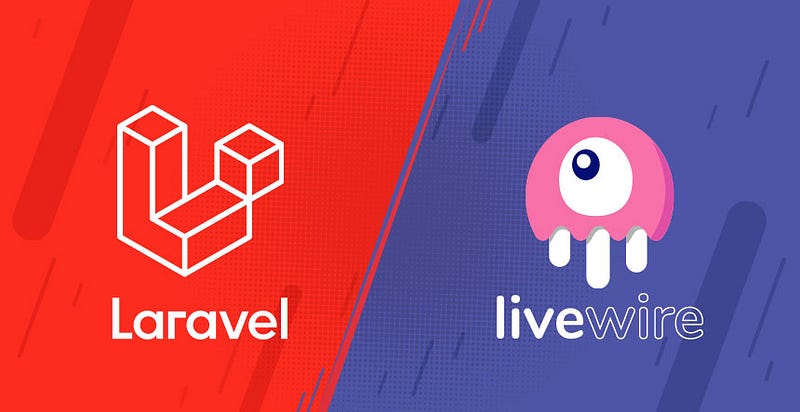6 reasons why You Should Learn Laravel/Livewire Over Next.js
 Soulis
SoulisTable of contents

NextJs is a framework that unlike Laravel/Livewire is very underrated.
Like many noobs I learned HTML, CSS and JS to do from simple, YET elegant websites to learn NodeJS, React and NextJs to make complex web applications. Without forgetting to hate the absolute shit of PHP for some reason-even when this language was my first love.
The older I got the more I was able to see through the Js propaganda.
1. Understand the Core Benefits
Laravel Livewire enhances Laravel applications with modern, reactive components without leaving the Laravel ecosystem while Next.js, on the other hand, is a powerful React framework known for its server-side rendering and static site generation.
2. Seamless Integration with Laravel
One of the biggest advantages of Laravel Livewire is its seamless integration with Laravel. If you’re already working within the Laravel ecosystem, Livewire allows you to add dynamic, interactive features without needing to learn a new framework or set up a separate frontend stack.
This integration ensures a more cohesive development experience and leverages Laravel’s robust features like Eloquent ORM and Blade templating.
3. Simplified Development Process
Laravel Livewire simplifies a lot the development process by allowing you to build reactive interfaces with minimal JavaScript-thanks that it has AlpineJs out of the box. With Livewire, you can manage complex UI interactions and state without having to write extensive frontend code and use a complex Fronted framework.
This streamlined approach reduces the learning curve and speeds up development by a significant margin, especially if you are already familiar with PHP and Laravel ecosystem.
4. Reduced Complexity and Learning Curve
While Next.js offers powerful features for React developers, it introduces a steeper learning curve due to the complexity of React and its ecosystem. Laravel Livewire provides a more straightforward approach for those who prefer to stay within PHP and Laravel, minimizing the need to learn new technologies or manage a separate frontend stack- this can be especially beneficial for developers who want to focus on backend development without diving deep into frontend frameworks.
5. Enhanced Developer Productivity
With integration with Laravel’s Blade templating engine and its ability to handle complex UI logic server-side can lead to increased developer productivity and reduction of the need to switch between frontend and backend code, minimizing context switching; also it helps developers maintain focus and efficiency throughout the entire development process.
6. Cost-Effective Development
For teams or individual developers working with Laravel, adopting Livewire can be a cost-effective solution because eliminates the need for a separate frontend framework, which can reduce development time and associated extra costs. Additionally, maintaining a single stack can simplify deployment and reduce the overhead of managing multiple technologies, libraries and versions.
7. Real-Time Updates and Dynamic Features
Livewire supports real-time updates and dynamic features natively, allowing developers to build interactive applications without complex JavaScript frameworks.
This capability is particularly useful for applications that require real-time interactions or frequent updates without the need for full page reloads.
8. Community and Ecosystem Support
Laravel has a strong, active and supportive community with extensive resources, including tutorials, forums, discord/reddit servers, and packages. Livewire benefits from this vast ecosystem, offering developers access to a wealth of knowledge and tools that can enhance development and troubleshooting.
In contrast, while Next.js also has a robust community, its focus on React may involve additional learning and adaptation and the obligation to PAY for tools that you could easily get for free in the Laravel ecosystem.
Choosing between Laravel Livewire and Next.js ultimately depends on your specific needs and preferences. For developers entrenched in the Laravel ecosystem, Livewire offers a more integrated and streamlined approach to building interactive applications with minimal additional overhead.
If you value seamless integration, reduced complexity, and cost-effective development, Laravel Livewire presents a compelling option over Next.js.
You might also like:
- 6 Simple (But Effective) Pieces Of Advice I’d Give Anyone Starting In 3D Web Development
- Why Articles are the Best Way to Publish Devlogs Instead of Videos
- From Sacred Beginnings to a Fallen Order: The Rise and Tragic Fall of the Knights Templar
- How to Balance Multiple Hobbies Without Overwhelm
- 6 Unknow Ways to Get Funded for Your Game Development Project
If you enjoyed this and want more, follow me on Twitter for updates! You can also drop a tip on ko-fi or subscribe to my newsletter for exclusive content. Your support keeps the creativity flowing! 😊
Stackademic 🎓
Thank you for reading until the end. Before you go:
- Please consider clapping and following the writer! 👏
- Follow us X | LinkedIn | YouTube | Discord
- Visit our other platforms: In Plain English | CoFeed | Differ
- More content at Stackademic.com
Subscribe to my newsletter
Read articles from Soulis directly inside your inbox. Subscribe to the newsletter, and don't miss out.
Written by

Soulis
Soulis
Experienced developer talking about Web & Game Dev, 3D Art & self-publishing | Founder of VCard | Ghostwriter | Blender | Artisan | Author of 45 articles.